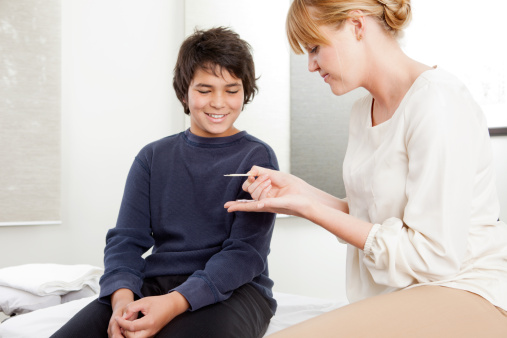The British Acupuncture Council (BAcC) set up Acupuncture Awareness Week (from 25 Feb – 3 Mar) in 2012 with the aim of teaching more people about traditional acupuncture.
The British Acupuncture Council is the leading self-regulatory body for the practice of traditional acupuncture in the UK. With over 3,000 members, they have a find-an-acupuncturist service on their website. They believe that most people discover acupuncture as a last resort when conventional medicine has failed, and through awareness they hope to change that. They state that acupuncture “has a very positive model of good health and function, and looks at pain and illness as signs that the body is out of balance. The overall aim of acupuncture treatment, then, is to restore the body’s equilibrium.”
10 FACTS ABOUT ACUPUNCTURE
1. Acupuncture is based on the flow of vital energy in the body. An acupuncturist assesses the flow and distribution of this vital energy within its pathways, known as meridians, and uses the placement of needles on specific points to help the body heal itself.
2. The oldest acupuncture needles date back to 600 A.D. These needles were made of bronze, copper, tin, gold, and silver. It is believed that before the use of metal needles, thorns, sharpened bamboo, or sharpened bone were used.
3. Like Indian Aryuveda, Traditional Chinese Medicine (TCM) is a system of healing, of which acupuncture is a part. Other aspects include Chinese herbalism, diet, and physical movement such as Tai Chi and Qi Gong.
4. The first known book of Chinese Medicine, the Classic of Internal Medicine of the Yellow Emperor, dates back to between the first century BC and the first century AD. All styles of acupuncture currently practised around the world trace their roots back to this text.
5. After it was nearly banned in 1929 in favour of Western medicine, TCM was revived by the People’s Republic of China in 1948, and encouraged to grow. By 1978, whole hospitals and research departments were devoted to the practice of TCM.
6. Acupuncture is one of the safest medical treatments, both conventional and complementary, on offer in the UK. Two surveys conducted independently of each other and published in the British Medical Journal in 2001 concluded that the risk of a serious adverse reaction to acupuncture is less than 1 in 10,000. This is far less than many orthodox medical treatments.
7. Like other holistic approaches to health, acupuncture addresses the physical, emotional and mental aspects of a person, seeing them to be interdependent. A practitioner of acupuncture takes an holistic approach during the consultation. They will discuss your medical history, but also listen to what your body says by noting the appearance of your face and body build, the shape and colour of your tongue, the quality of your pulses, the feel of diagnostic areas such as your abdomen and back, and weaknesses in your muscles and along the meridians.
8. There are many different styles of acupuncture which share a common root but are distinct and different in their emphasis, such as TCM, Five Elements, Stems and Branches, Japanese Meridian Therapy, and many others. This reflects the movement of acupuncture to other parts of Asia and the development of a range of approaches with a common goal.
9. According to the World Health Organization, acupuncture can treat a variety of conditions including, but not limited to: Gastrointestinal disorders, insomnia, menopausal symptoms, infertility, and psycho-emotional disorders. There is a wide range of research indicating acupunture’s efficacy.
10. Acupuncture was originally used as a preventative medicine to keep people well. Acupuncturists were only paid if their patients were healthy; if the patient became sick the acupuncturist didn’t get paid. Acupuncture has much to offer those who want more health and vitality, even if they don’t have any problems or illnesses. The ideal practice of acupuncture is correcting small imbalances before they become serious health problems.
Books worth reading:
The Acupuncture Handbook: How acupuncture works and how it can help you Angela Hicks
Healing Your Emotions: Discover your five element type and change your life
Healing with Whole Foods: Asian Traditions and Modern Nutrition Paul Pitchford
Chinese Medicine: The Web that has no Weaver







